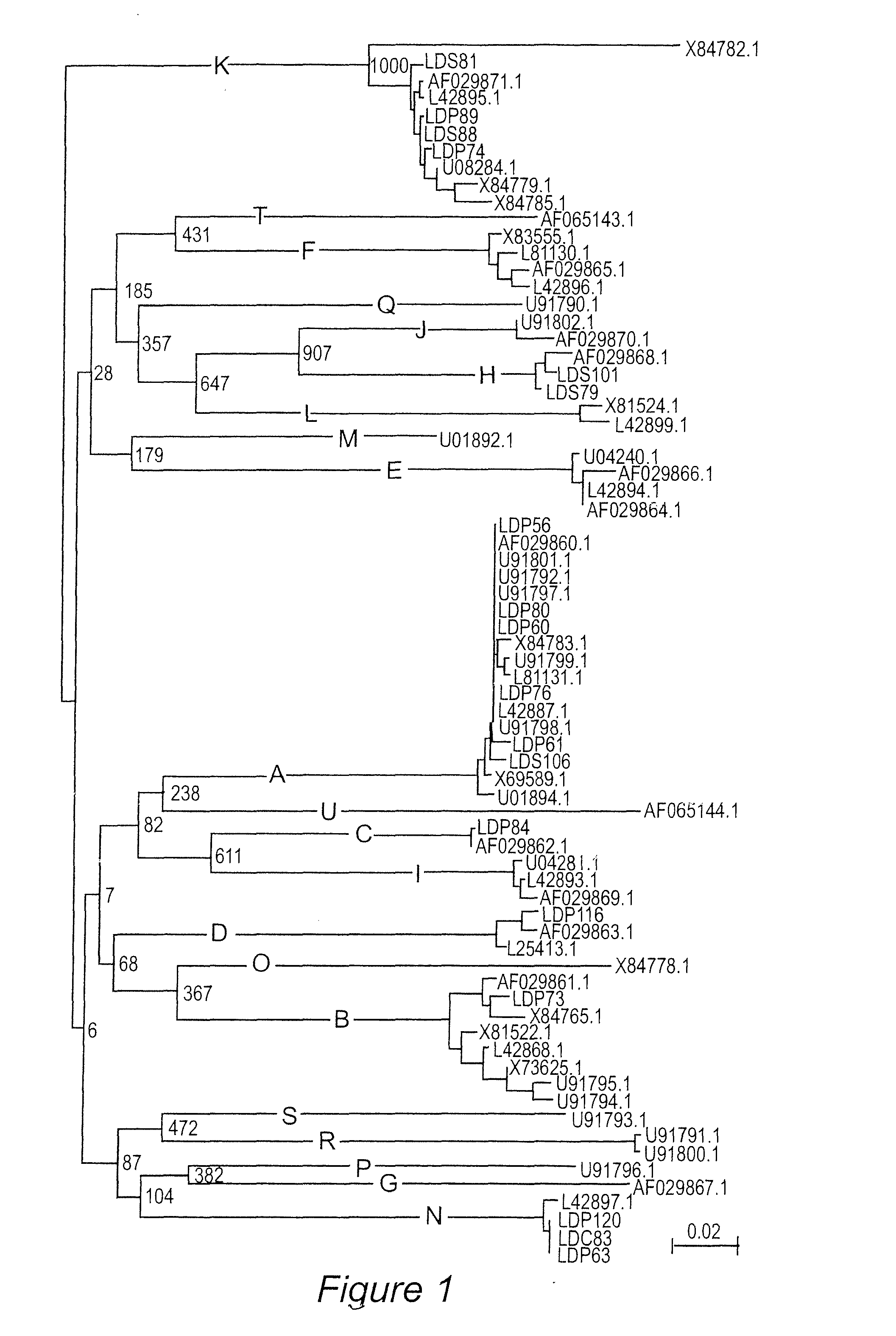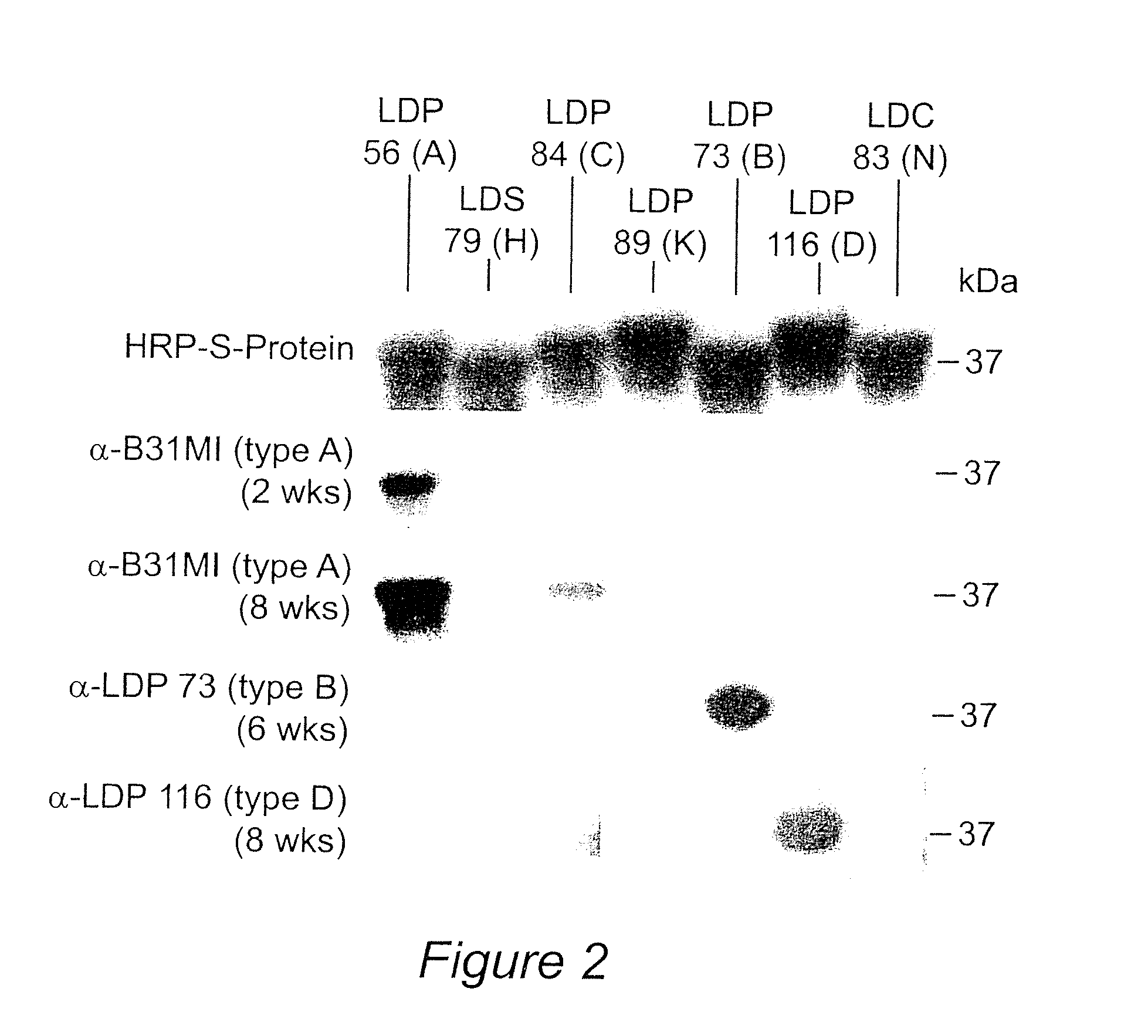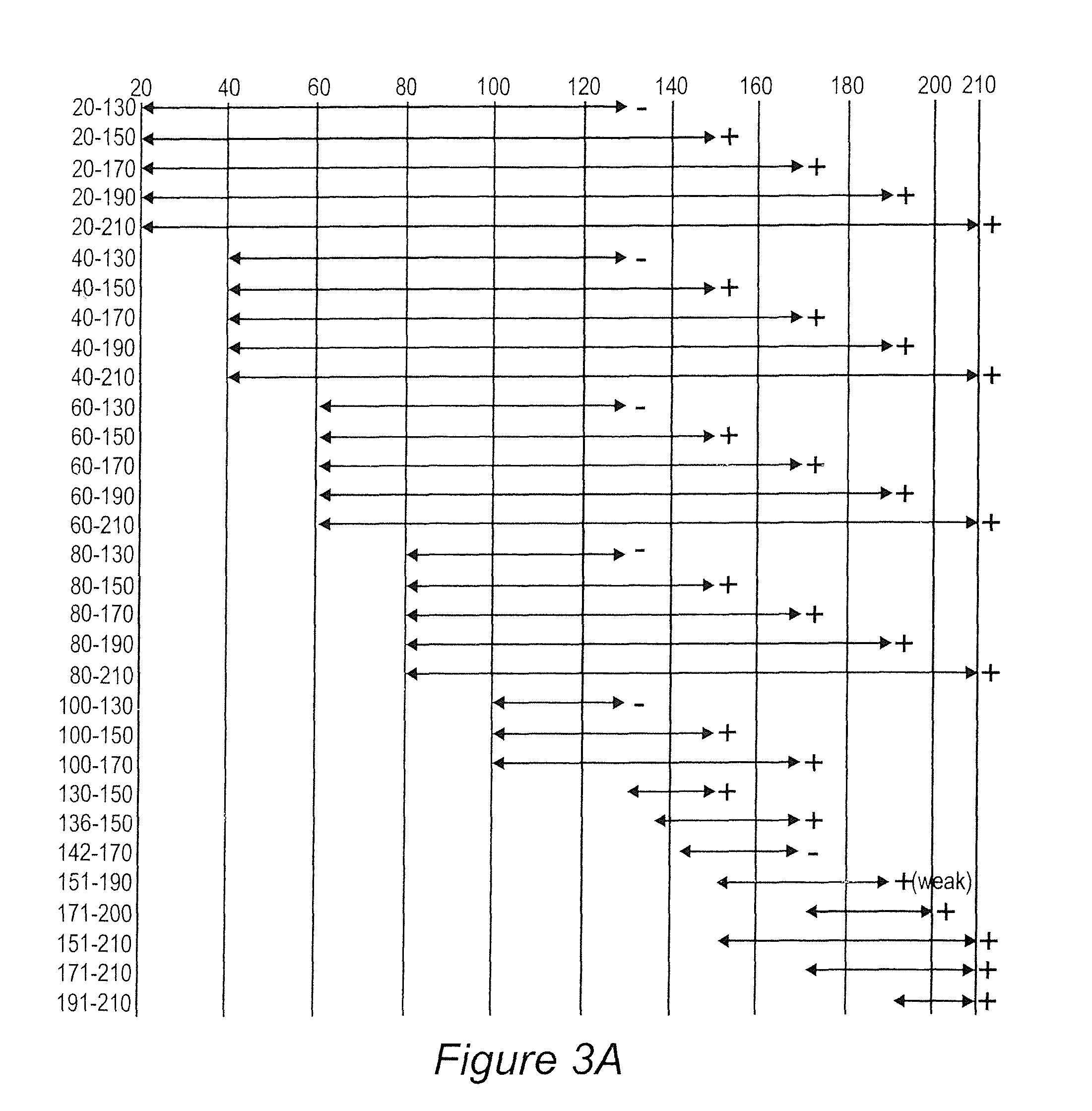Polyvalent chimeric ospc vaccinogen and diagnostic antigen
a lyme disease and ospc technology, applied in the field of lyme disease vaccine and diagnostic antigen, can solve the problems of insufficient commercialization of vaccines, significant socio-economic costs of lyme disease, and thus far insufficient broad protection of vaccines
- Summary
- Abstract
- Description
- Claims
- Application Information
AI Technical Summary
Benefits of technology
Problems solved by technology
Method used
Image
Examples
example 1
Demonstration of OspC Type Diversity in Invasive Human Lyme Disease Isolates and Identification of Previously Uncharacterized Epitopes that Define the Specificity of the OspC Antibody Response
Introduction
[0073]Lyme disease is transmitted to humans through the bite of Ixodes ticks infected with Borrelia burgdorferi, B. garinii or B. afzelii. Outer surface protein C (OspC) is thought to be an important virulence factor involved in the transmission process and possibly in the establishment of early infection in mammals (Grimm et al, 2004; Parl et al, 2004; Schwan et al., 1995). OspC is a variable, ˜22 kDa, surface exposed, plasmid-encoded lipoprotein (Fuchs et al., 1992; Marconi et al., 1993; Sadziene et al., 1993). Crystal structures have been determined for three OspC proteins (Eicken et al, 2001; Kumaran et al, 2001). The protein is largely helical with 5 alpha helices connected by variable loops. The loops have been postulated to form ligand binding domains (Eicken et al, 2001; Kum...
example 2
Analysis of Antibody Response in Humans to the Type A OspC Loop 5 Domain and Assessment of the Potential Utility of the Loop 5 Epitope in Lyme Disease Vaccine Development
[0094]Outer surface protein C (OspC) of the Lyme disease spirochetes is a 22-kDa immunodominant (Fuchs et al, 1992) antigen that is expressed upon tick feeding and during early stages of infection (Schwan et al, 1995). Although a strong antibody response to OspC is mounted during natural infection, the response does not lead to bacterial clearance because OspC production is turned off shortly after the establishment of infection (Schwan et al, 1995). OspC has emerged as an important virulence factor and a potential candidate for Lyme disease vaccine development. However, efforts to develop an OspC-based vaccine have been hampered by its heterogeneity among strains (Theisen et al, 1993; Wilske et al, 1996; Wilske et al, 1993). Although vaccination with OspC elicits a highly protective response, most studies have repo...
example 3
Development of an OspC-Based Tetravalent, Recombinant, Chimeric Vacinogen
[0100]Lyme disease is the most common arthropod-borne disease in North America and Europe. At present, there is no commercially available vaccine for use in humans. Outer surface protein C (OspC) has antigenic and expression characteristics that make it an attractive vaccine candidate; however, sequence heterogeneity has impeded its use as a vaccinogen. Sequence analyses have identified 21 well defined OspC phyletic groups or “types” (designated A through U). This study reports mapping of the linear epitopes presented by OspC types B, K and D during human and murine infection and exploitation of these epitopes (along with the previously identified type A OspC linear epitopes) in the development of a recombinant, tetravalent, chimeric vaccinogen. The construct was found to be highly immunogenic in mice and the induced antibodies surface labeled in vitro cultivated spirochetes. Importantly, vaccination induced co...
PUM
| Property | Measurement | Unit |
|---|---|---|
| Fraction | aaaaa | aaaaa |
| Fraction | aaaaa | aaaaa |
| Fraction | aaaaa | aaaaa |
Abstract
Description
Claims
Application Information
 Login to View More
Login to View More - R&D
- Intellectual Property
- Life Sciences
- Materials
- Tech Scout
- Unparalleled Data Quality
- Higher Quality Content
- 60% Fewer Hallucinations
Browse by: Latest US Patents, China's latest patents, Technical Efficacy Thesaurus, Application Domain, Technology Topic, Popular Technical Reports.
© 2025 PatSnap. All rights reserved.Legal|Privacy policy|Modern Slavery Act Transparency Statement|Sitemap|About US| Contact US: help@patsnap.com



